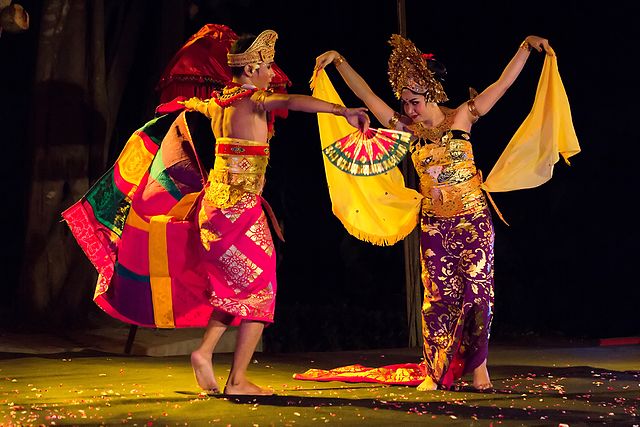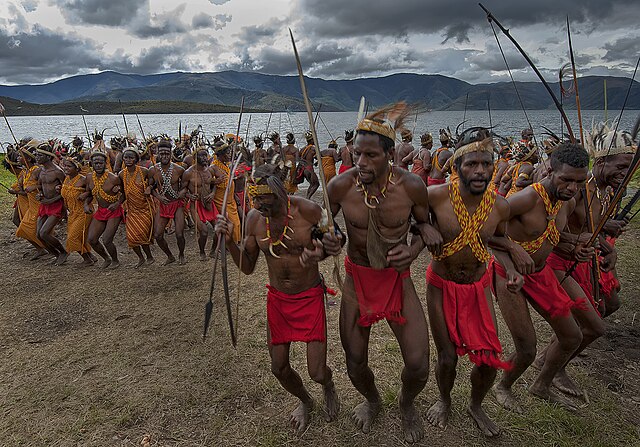Saman is one of the most popular dances in Indonesia. Its origin is from the Gayo ethnic group from Gayo Lues, Aceh province, Indonesia, and is normally performed to celebrate important occasions. The dance is characterized by its fast-paced rhythm and common harmony between dancers. These two elements are key figures of Saman and are among the reasons Saman is widely known and practiced in Indonesia, besides being relatively easy to learn.
Saman (dance)
Saman dance in Lokop, East Aceh Regency during Dutch colonial period
Saman dance performance.
Dance in Indonesia reflects the country's diversity of ethnicities and cultures. There are more than 1,300 ethnic groups in Indonesia. Austronesian roots and Melanesian tribal forms are visible, and influences ranging from neighboring Asian and even western styles through colonization. Each ethnic group has its own dances: there are more than 3,000 original dance forms in Indonesia. The old traditions of dance and drama are being preserved in the numerous dance schools which flourish not only in the courts but also in the modern, government-run or supervised art academies.
Oleg Balinese dance performed by a pair of dancers
Papuan tumbu tanah dance
Kabasaran dance, Minahasa North Sulawesi.
Lakshmana, Rama and Shinta in Ramayana ballet at Prambanan, Java.







